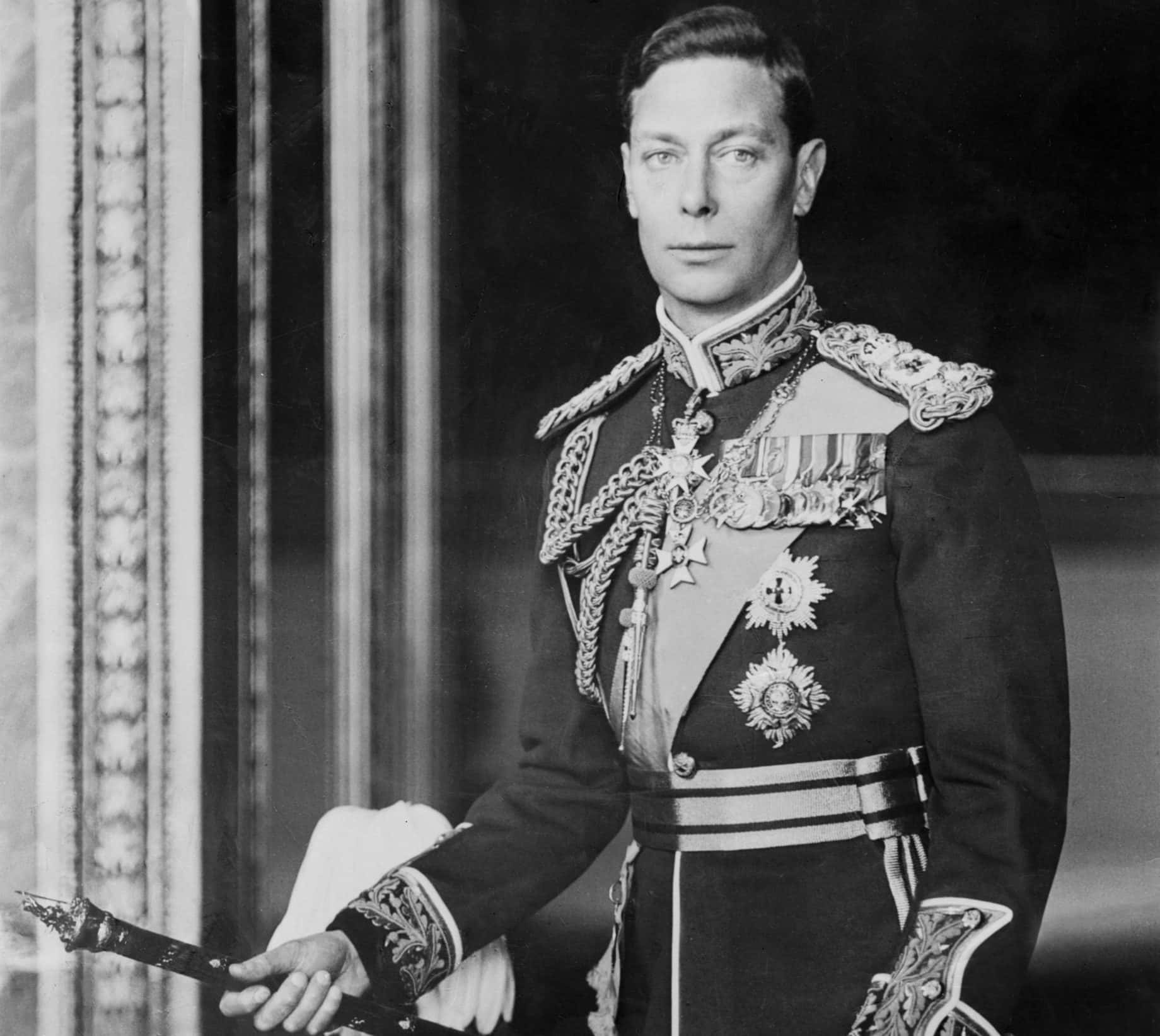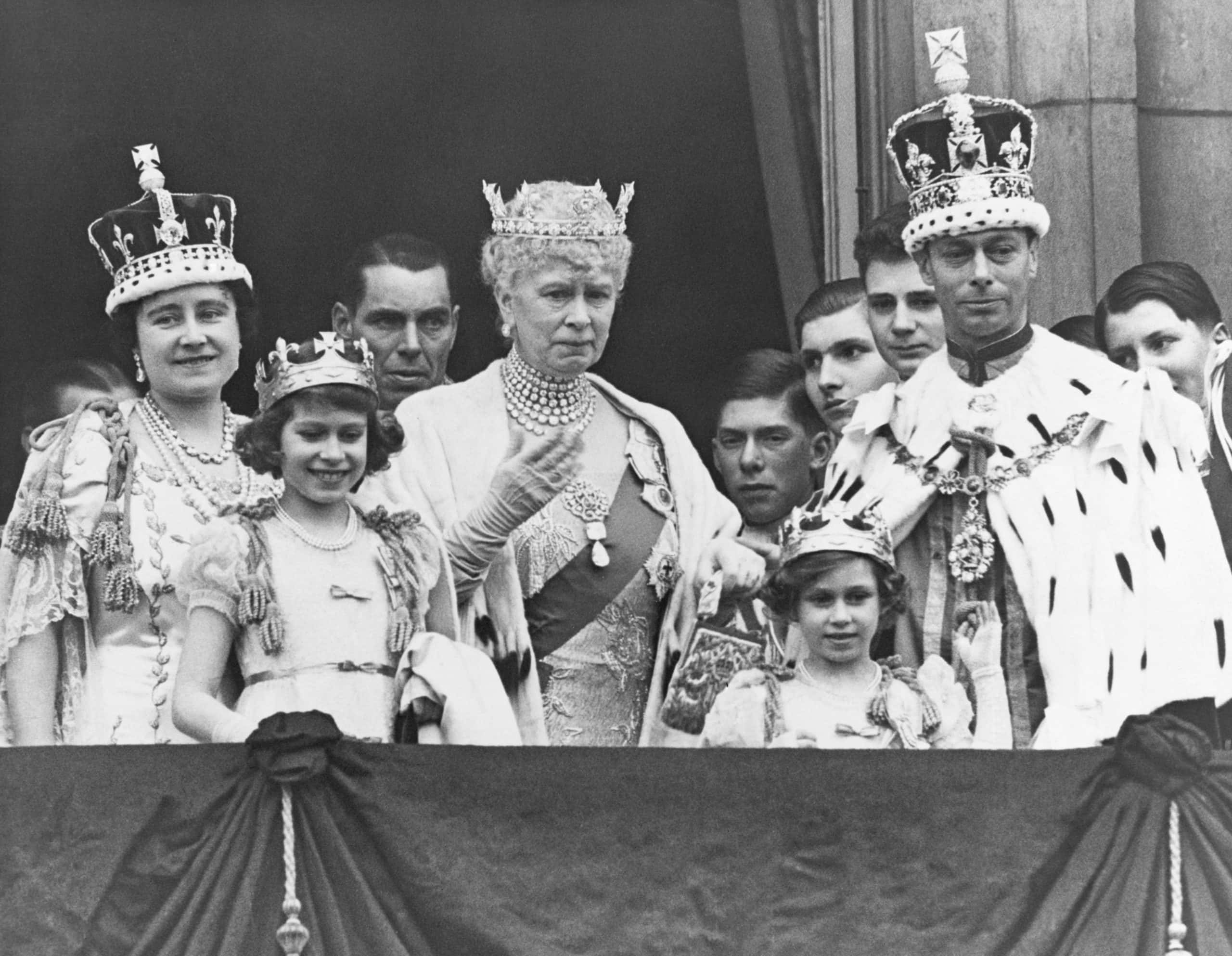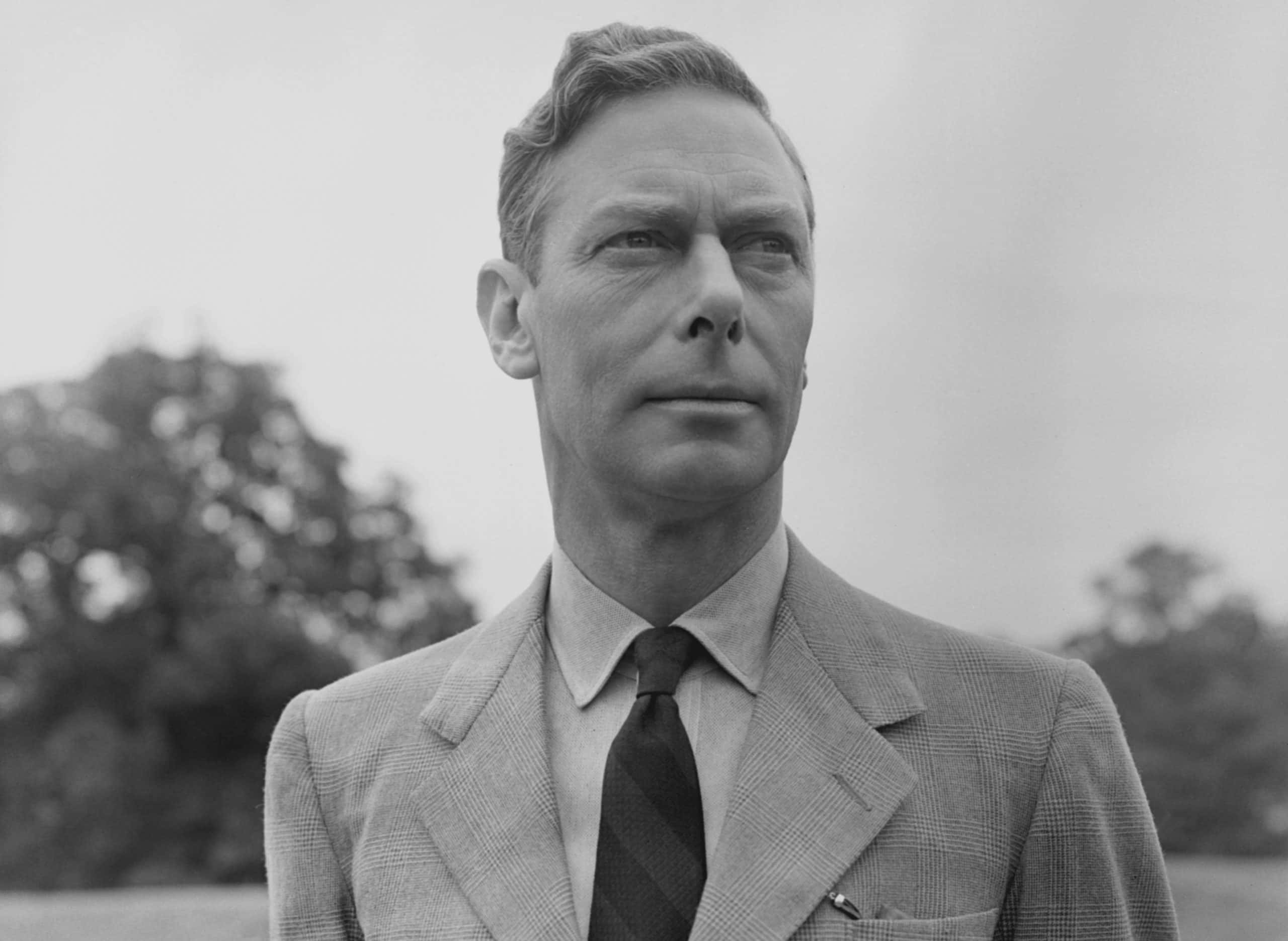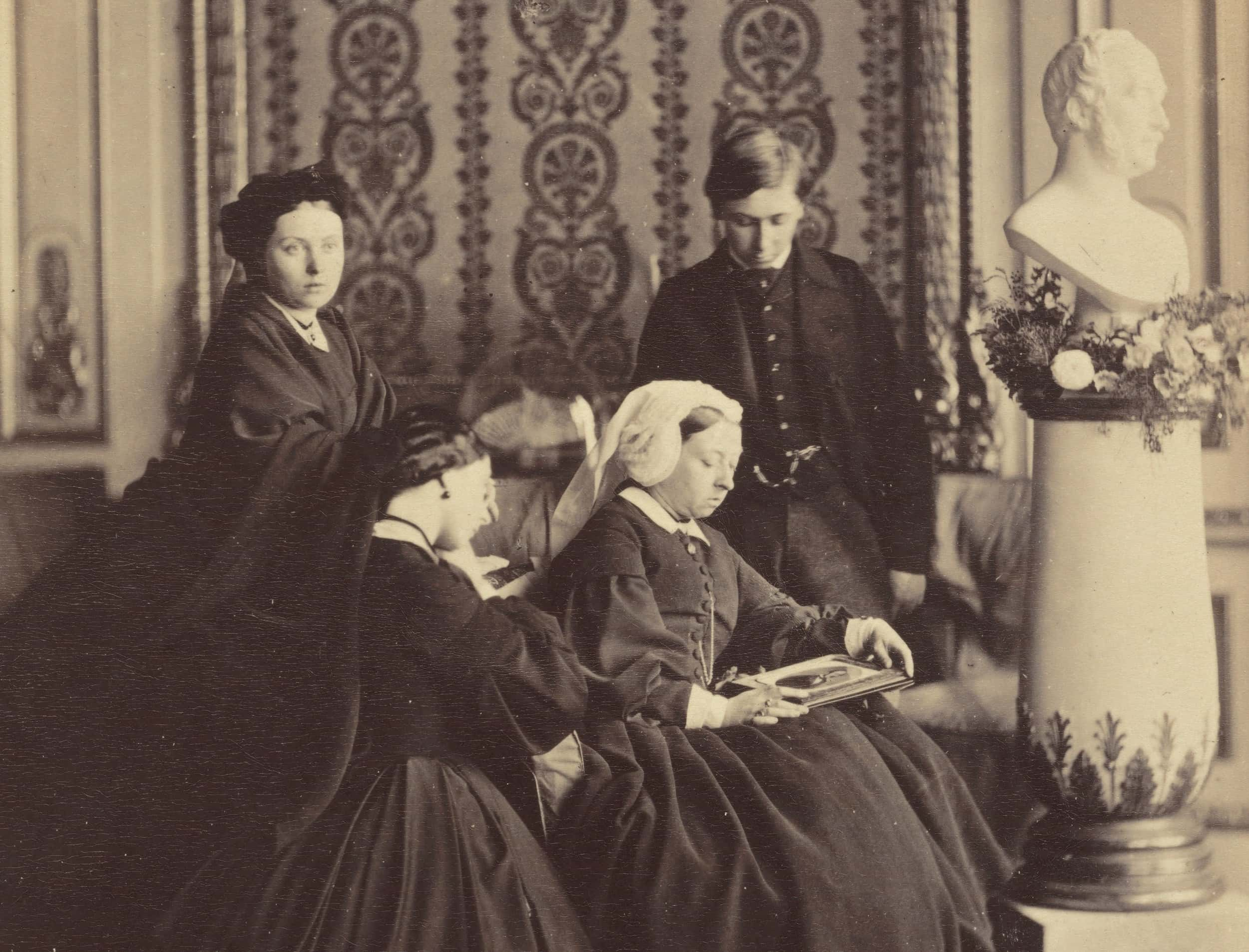“The highest of distinctions is service to others".—King George VI of the United Kingdom.
King George VI became known as the “Reluctant King” after his older brother, Edward VIII, abdicated the throne in 1936. Remembered for ruling through the Second World War and for being the father of Queen Elizabeth II—not to mention for inspiring the Oscar-winning biopic The King’s Speech (2010)—George only reigned for 16 years, but in those years he became one of the more notable monarchs in modern British history. From his less-than-clean bill of health to the explosive perils he faced in the War, there was certainly more to George VI than his notorious stammer.
What did The King’s Speech get right or wrong? Was he always so anti-Hitler? What tricks did he use to overcome that stammer? Who was to blame for the wardrobe malfunction at his coronation? Make sure to clear your throat for these 42 interesting facts about King George VI of the United Kingdom.
1. Bye, Bye Bertie
At his birth, the boy who would be “King George VI” was christened “Albert Frederick Arthur George". The name wasn’t well-received by everyone though. His maternal grandmother, the Duchess of Teck, seemed to predict the future when she hoped that his last name “may supplant the less favored one". Among his close friends and family, he would be known as “Bertie".

2. Filling the Gorge with “George”
Just as he was born fourth in line to the throne, “Albert” would adopt his fourth name for his kingship. Officially, the king adopted “George VI” as his regnal name to reinforce the royal continuity with his father, George V. Having overstepped his older brother, albeit reluctantly, George needed things to seem as “business as usual” as possible.
3. The Sickly Spare
Although born into a charmed life, George’s childhood was riddled with health problems. Aside from his stammer, he also endured chronic stomach issues and was “easily frightened and somewhat prone to tears". His “knock knees” also meant he had to wear corrective splints for most of his youth.
4. 15 Love
Despite his legendary health struggles, George was an athletic youth. He even competed in the men’s doubles tournament at Wimbledon in 1926, before he became king.
5. Give Me a Boost?
George graduated at the bottom of his class at the Royal Naval College, Osborne in 1911. Nevertheless, the prince advanced to the next level at Royal Naval College, Dartmouth. Who needs finals when your dad is the king?
6. Missing in Action
While George served in World War One, he did not see much combat. Blame his chronic health problems, including ulcer issues, which meant he had to have surgery in November 1917.
7. As If He’d Pick Up a Wrench In His Life
At the age of 25, George became known as the “Industrial Prince". His father sent him to represent the crown on tours of coal mines, factories, railyards, and other manufacturing places. To his credit, George was legitimately interested in the working conditions of his people, acting as President of the Industrial Welfare Society.
8. The Titular Back-Up
Before he was king, George enjoyed the courtesy titles of Duke of York, Earl of Inverness, and Baron Killarney. His older brother, future Edward VIII, got the “plum” title of Prince of Wales, so the little brother would have to settle for those three (for the time being, at least).
9. There’s More To Life Than Finals
George attended Trinity College, Cambridge, where he studied history, civics, and economics under famed historian RV Laurence. Unfortunately, he only got to pursue his studies for one year—his father decided George’s skills were better used representing Dad on royal tours, promptly withdrawing George from school so he could enter the family business of being polite in public.

History's most fascinating stories and darkest secrets, delivered to your inbox daily.
10. It’s Better With Friends
George became good friends with US President Franklin D. Roosevelt during his 1939 tour of North America. It’s believed the bonds were an important part of moving North America away from its isolationist position in early-WWI.
11. Third Time Is the Charm
George proposed to Elizabeth Bowes-Lyon three times before she said yes. According to Bowes-Lyon, she wasn’t ready to make the huge lifestyle changes that come with being a royal family member—which is totally fair, to be honest.
12. The Revolution Will Not be Televised
Originally, the BBC—which was then newly made and hot for content—wanted to broadcast Prince Albert and Elizabeth Bowes-Lyon’s wedding on live radio. The clergy at Westminster Abbey turned down such a tawdry idea. The couple wed, off the airwaves, on 26 April 1923. We wouldn't want royal weddings to devolve into wild media circuses, now would we?
13. A Little Help From an Aussie
Seeing as The King’s Speech won Best Picture, you probably know about George’s longtime struggle to overcome his stammer. It was a botched speech on Halloween 1925—which was said to be painful for everyone involved—that led him to an Australian speech therapist named Lionel Logue. Logue and the then-Duke of York partook in breathing exercises, after which George’s oral fluency greatly improved. However, he never overcame his stammer completely.
14. Chicks Before Coronets
Upon the demise of their father, King George V, Prince Albert’s brother rose to the throne as Edward VIII. Albert became heir presumptive, on account of the fact that Edward was still unmarried with no children. It didn’t stay that way for long: Edward was set on marrying Wallis Simpson, an American socialite and two-time divorcee, which pretty much everyone in the government was going to forbid. Faced with choosing between love and the crown, Edward chose love.
15. We Are Considering Other Applicants
George wasn’t the only option to replace Edward. After all, the king had three living brothers by 1936. Prince Henry, Duke of Gloucester, was put forth as a successor. Because Henry was the only brother with a son (George “only” had his two daughters, Elizabeth and Margaret), there was some talk that Henry should be king for the sake of male continuity.
16. A Prince Has No Place in the Great White North
In 1931, Canadian Prime Minister RB Bennett suggested that then-Prince Albert act as the Governor General of Canada. The suggestion that such a high ranking member of the royal family be appointed to the post was hugely controversial and ultimately rejected by his father, George V.
17. For Your Name Only
George decided Edward had forfeited all rights to royal titles, including “Royal Highness,” by forfeiting the crown. While George conferred Edward the title of “Duke of Windsor,” it was not allowed to pass to his wife or any of his children.
18. The Hand-Me-Down Crowning
Before abdicating, Edward VIII was set to be coronated at Westminster Abbey on 12 May 1937. Obviously, this did not come to fruition, but why waste good party planning? The same date became George’s coronation instead.
19. Not Without My Mother
George VI’s coronation broke tradition by having his mother, Queen Mary, in attendance. Lord knows her son needed the support.
20. Better the Crown Than Your Pants, Am I Right?
At his coronation, George’s crown was put on his head the wrong way, which caused the Archbishop of Canterbury to embarrassingly fumble the royal headwear.
21. Mr. Bean Comes to Westminster Abbey
George almost never got the chance to wear his crown… literally. Even before the Archbishop managed to put it on backwards, the Dean of Westminster stumbled down the steps as he was carrying the crown of St. Edward’s to George’s coronation, nearly smashing the legendary headgear, which was luckily attached by a ribbon to the cushion it sat upon. Do worse coronations mean better reigns? I'm sure those two certainly hoped so.
22. Their Performance Wasn’t a Hit
The King and Queen of England nearly lost their lives in the 1940 Blitz on London. While the couple was at Buckingham Palace, two German explosives went off in the courtyard. In a fabulous sound bite, the Queen said, “I am glad we have been bombed. It makes me feel we can look the East End in the face". For their bravery—and living on rations like everyone else—the royal family upheld their public image as strong allies of the people throughout WWII.
23. Tea Time with the Boys
From September 1940, King George and Prime Minister Winston Churchill met for lunch every single Tuesday to discuss the War with privacy and honesty, keeping up the practice for four and a half years.
24. Be Our Guest
Following the breaks with tradition that defined his reign, George let Winston Churchill on the balcony at Buckingham Palace during the Victory in Europe celebrations of 1945.
25. How Common
Under George’s reign, the British Empire officially dissolved and was replaced with the Commonwealth. As a result, George was the very first “Head of the Commonwealth".
26. Independence in Pieces
George is the last King of England to use the title “Emperor of India". Following the transformation of British India into the separate nations of India and Pakistan, he instead used the titles “King of India” and “King of Pakistan” as of 1947. While he gave up the title of King of India when the country became a republic in 1950, he used the title King of Pakistan until his passing.
27. Royal Bill of Health
The bad health from George’s youth did not relent in his adulthood. For one, all the heavy nicotine use had taken its toll and led to lung cancer. In 1951, he had to get his left lung removed, which did not bode well for the ailing king's future.
28. Life and Limb Come First
In 1949, George almost lost his leg due to an arterial blockage in his right limb, forcing him to postpone his planned tour of Australia and New Zealand to get surgery.
29. Peace Out
King George VI passed on in his sleep on 6 February 1952. He was 56 years old. His heir, Elizabeth, was on tour in Kenya when she heard the news of her father's demise. She immediately flew back to Britain to be crowned Queen Elizabeth II.
30. Flowers for Someone
At their wedding, George’s bride Elizabeth Bowes-Lyon placed her bouquet upon the Tomb of the Unknown Warrior. This gesture was in memory of her lost brother, Fergus, and since then, every royal bride has followed this floral tradition.
31. Love Sick
While George and Elizabeth Bowes-Lyon were happily married, their honeymoon was less pleasant. Elizabeth contracted whooping cough in Scotland, which was described as rather “unromantic".
32. Artistic License
Would the king’s speech therapist ever swear in front of his majesty? Despite what we saw on screen, Lionel Logue's grandson highly doubts that. He is also very sure that his grandfather would never dare address the king as “Bertie,” as Logue does in The King’s Speech.
33. Swiping Left on Your Own Brother?
George financially supported his brother Edward through the latter’s exile. However, Edward would still call George almost every day, asking for more money and/or pressuring George to grant Wallis Simpson the title of Duchess. Eventually, George ordered the ex-king’s calls to not be put through, in what might be the first ever royal “left on read".
34. Sally Sells Sea Shells By the Commonwealth
Before every major royal speech, Lionel Logue and George VI would practice tongue twisters to help minimize his stammer. The king and his speech therapist would remain friends until the former’s death.
35. Tongue Tied to the Family
For his work with the king’s speech, Lionel Logue was so beloved by the royal family that he maintained correspondence with the Queen Mother even after the king’s passing. Upon his own demise in 1953—just one year after George’s—the Queen and Queen Mother sent royal representatives to be at his funeral.
36. Radio Made the Monarchy Star
Can you hear me? Ironically, George VI is the first monarch to address the commons, post-coronation, via live radio. He spoke slowly to overcome his notorious stutter. In his uninterrupted words, “Never before has a newly crowned King been able to talk to all his people in their own homes on the day of his coronation".
37. Highborn in the High Skies
While Edward VIII was the first royal family member to fly a plane, George VI was the first one to be a fully-certified pilot. Leave it to Bertie to follow the rules.
38. Overshadowed By a Ghost
Born during the reign of his great-grandmother, Queen Victoria, George’s birth “upstaged” the 34th anniversary of his great-grandfather's passing—Victoria's beloved consort, Prince Albert. While babies should be cause for celebration, George’s family greeted his birth with anxiety. How would their great matriarch react to this great indignity of having to share her mourning day with a baby? To assuage Queen Victoria’s anxiety, they named the baby “Albert". Sounds like a fun family.
39. I’d Take the Title Too
There’s some alternate universe where Elizabeth II is never born because her father married an Australian woman named Sheila, Lady Loughborough. George held a long torch for Loughborough, but there was a hitch: she was already married. In April 1920, the infatuation ended when George’s dad offered him the sweet Dukedom of York to cut it off.
40. Fairy Tale Beginning
The same year he ended his interest in the married Lady Loughborough, George fell in love with his future wife, Lady Elizabeth Bowes-Lyon. It appears George fell for Bowes-Lyon almost instantly and became determined to marry her.
41. Do I Have To, Mom?
On 11 December 1936—less than a year after inheriting the crown—Edward VIII abdicated his throne and left it to his younger brother, the future George VI. For his part, George was a very reluctant king. On the day before the abdication, George wrote in his diary that he “broke down and sobbed like a child” when he told his mom the news.
42. I Guess You Can Sit With Us
George’s early reign was truly defined by World War Two. As he was constitutionally bound to support the Prime Minister, Neville Chamberlain, George was also bound to back Chamberlain's appeasement of Adolf H. In a show of support, George and his wife Elizabeth broke precedent by letting Chamberlain onto the iconic balcony at Buckingham Palace. One historian called George’s close association with Chamberlain and his Nazi appeasement "the most unconstitutional act by a British sovereign in the present century".



















































